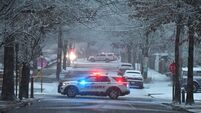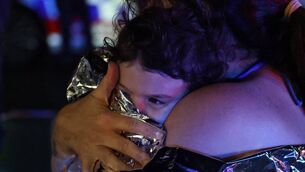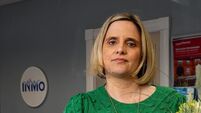India halts remote island mass evacuations
However, the government did not change its policy barring international aid groups from the remote Andaman and Nicobar islands, citing concerns for indigenous tribes there and security at a military air base.
Instead, for the past week, more than 12,000 villagers were ferried from the archipelago to Port Blair, capital of the federally administered territory, where they were housed in camps.
Others were sent to the Indian mainland to seek work or stay with relatives until their homes were rebuilt under an ambitious government programme following the tsunami.
“There has been a change in strategy. Aid will be taken to their homes,” a relief official said.
The large-scale transfers of survivors to Port Blair and to the mainland had been criticised by aid organisations, who say India’s relief programme is in disarray.
Saroj Das, regional manager of southern India for the British group ActionAid International, urged the Indian government to reconsider the ban.
“The whole world wants to respond to this crisis. Andaman and Nicobar should not be isolated from this relief effort,” he said.
Officials put India’s official death toll at 9,571, with another 5,809 people still missing and feared dead in the remote territories.
The deluge of victims flooding into Port Blair has turned most of the city’s schools into refugee camps, plunging island survivors into an urban world most had never seen, and one many disliked.
People were living under plastic sheets and lining up for food as they waited for aid for their islands’ rehabilitation from the government.
“I feel awful in the city. It’s so noisy,” said 14-year-old Manmat Rao from the island of Hut Bay.
“They keep telling my mother to go to the mainland. Why should we go? To beg there? We don’t have any money; that’s all we will do.”
For survivors, beside the immediate issue of food and water, psychological trauma will also be a major concern, and counselling needs to be provided, aid groups said.
Sushil Singh, principal of a Port Blair high school being used as a relief camp, said he sees the impact on the children.
“The children are all scared. They imagine there are tremors and run out of the building in the night. We are trying to put them at ease with sports like football and cricket,” he said.
S Chiranjivi, 12, from Hut Bay, said: “I’m scared of the sea now. I used to play near the waves all the time back home but I don’t want to see it now. I can’t forget that day.”
Indian officials said conditions on the Andaman and Nicobar islands were improving. Relief camps have been built, telephone and utility links were restored on many islands, and dozens of smashed jetties were being reconstructed.
All transport resources - including fire engines - were being used to ferry drinking water. Army doctors have started inoculating villagers against disease.
But long-term recovery issues loom. Officials at the state-run shipping company in Port Blair issued a bleak damage assessment of its facilities and fleet, the crucial transport link in the archipelago.
“These ships are the lifeline of the island, but my entire dockyard is washed out,” said Samir Kohli, deputy director of shipping services. “If there is a breakdown in the ships, I don’t know how I am going to get them repaired.”
Mr Kohli said the waves ripped away two ships, five passenger ferries, and destroyed buildings.














